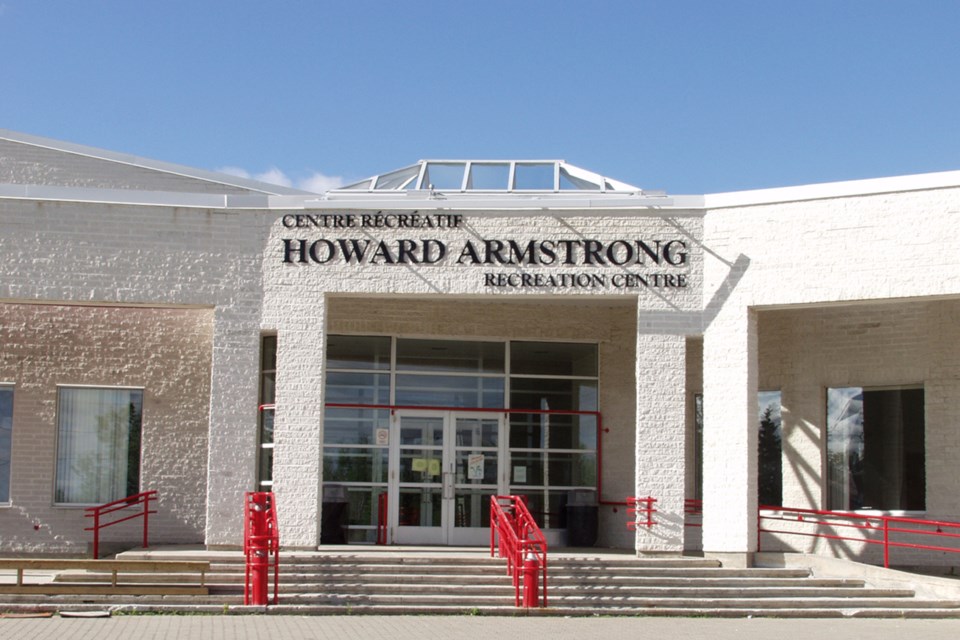Similar to other areas of municipal infrastructure, Greater Sudbury’s pools are being underfunded.
In order to maintain municipal pools in their current “fair” condition, the city would need to spend approximately $601,518 per year on maintenance/asset renewal efforts for the next 10 years, according to a report by a team of consultants the city enlisted.
Their report has been tabled for the Dec. 5 city council meeting.
The city’s draft budget allocates approximately one-tenth of this funding requirement, with only $62,000 set aside per year for pool projects between 2024-27.
Various larger-scale capital projects are also recommended, including such things as roof replacements, foundation repair, change room renewal and other building/equipment replacement/upgrades, totalling $17.7 million across all five pools in the next 10 years.
As it stands, the city’s pools are on track to slip to an overall “poor” condition by 2030.
(The same can be said for the overall condition of Greater Sudbury’s roads.)
“Building components that have surpassed their expected lifespan are increasingly at risk of failure, which can lead to service interruptions, cancelled programs, unplanned closures, and increased costs,” according to the consultants’ report.
Between February 2022 and July 2023, there were 15 days lost due to unplanned closures at R.G. Dow and Gatchell pools due to unexpected repairs to pool heaters and filter pumps, plus an additional 16 days lost at Onaping Pool due to staff shortages.
“While there is potential to extend the service life of the City’s pools, the existing facilities cannot offer the full range of modern amenities without extensive renovations and, in most cases, could not practically be renovated to provide all contemporary features or to meet the City’s (Community Energy and Emissions Plan) goals,” according to the report.
“Given their age, it will be a significant challenge to overcome the physical constraints of the current facilities in the long-run.”
The document in question is a “Current State Report,” and is part of the city’s ongoing Aquatic Service and Facility Review slated to be completed by September 2024.
Drafted by a consulting team headed by Monteith Brown Planning Consultants Ltd., Aquatic Design & Engineering, and The JF Group, the Current State Report was tabled this week. A report by city leisure services director Jeff Pafford has accompanied the consultant team’s work.
The city’s inventory of pools “has not kept pace with the growing recreational needs of Greater Sudbury residents,” according to Pafford’s report, which notes municipal pools are not barrier free.
“Many lack compliant entry ramps or chair lifts, modern or universal change rooms, natural lighting, and space for dryland training and programming.”
The City of Greater Sudbury’s five indoor pools have an average age of 49, which exceeds the expected useful life of publicly owned pools (46 years).
At a half-century old, the city’s pools were “built in a different era, which limits their ability to address the needs of all age groups and interests,” according to Pafford’s report.
- Gatchell Pool, Sudbury, built in 1975 (renovated in 1983)
- Nickel District Pool, Sudbury, build in 1973
- Howard Armstrong Recreation Centre Pool, Valley East, built in 1983
- Onaping Pool, Onaping, built in 1967
- R.G. Dow Pool, Copper Cliff, built in 1971
All pools but Onaping are 25-metres long, and have between five and six lanes. The Onaping pool is 15 metres long with four lanes.
A therapeutic/leisure pool has long been proposed to take shape in Azilda, but city council unanimously decided to put the project on pause earlier this year after it was revealed that “significant project escalations” were expected to affect the effort.
The city’s collection of five pools yielded a combined average of 169,410 visits per year between 2010 to 2022, averaging 33,882 per pool.
Use dropped significantly during the pandemic, from 194,388 in 2019 to 62,479 in 2020, climbing up to 112,617 by 2022.
The Onaping Pool is the least-used, at 5,189 visits in 2022 compared to 42,204 at Howard Armstrong, the city’s most-used pool.
“While historical investments in City pools have allowed the municipality to maintain these assets in fair to good condition, all City pools are demonstrating their age and showing signs of deterioration,” according to the consultants’ report.
“Most public complaints received by the City are largely preventable facility maintenance problems, such as change rooms, lockers, diving boards, starting blocks, etc.”
Another reported shortcoming with municipal pools has to do with accessibility.
Earlier this year, the city undertook barrier-free accessibility assessments for its pool buildings to determine what is needed to align with the Accessibility for Ontarians with Disabilities Act.
The total cost to address these requirements across all five pools is $2.8 million:
- Gatchell: $302,160
- HARC: $792,253 (entire building)
- Nickel District: $356,131
- Onaping: $889,016 (entire building)
- R.G. Dow: $445,298
Substantial renovations could trigger the city to address compliance requirements, which the consultants’ report notes would increase the cost and extent of renovations.
Notable non-municipal pools in Greater Sudbury include the Sudbury YMCA, Laurentian University and a therapeutic pool at Health Sciences North. The Laurentian pool has been closed since March 2020, and at the latest update earlier this month required “significant remediation.” Another update is expected by no later than Dec. 20.
The consultants’ report also covers the city’s seven supervised beaches and 17 splash pads.
Phase two of the city’s Aquatic Service and Facility Review will include a more detailed facility needs assessment, implementation strategy and more public consultation results.
A final report will be presented to city council in September 2024.
The latest preliminary report highlighting existing conditions will be presented during the Dec. 5 city council meeting, which begins at 6 p.m. The meeting can be attended in-person at Tom Davies Square. It can also be livestreamed by clicking here.
Tyler Clarke covers city hall and political affairs for Sudbury.com.
